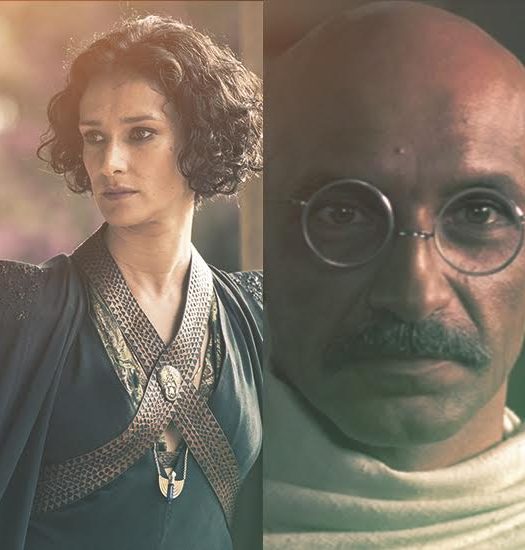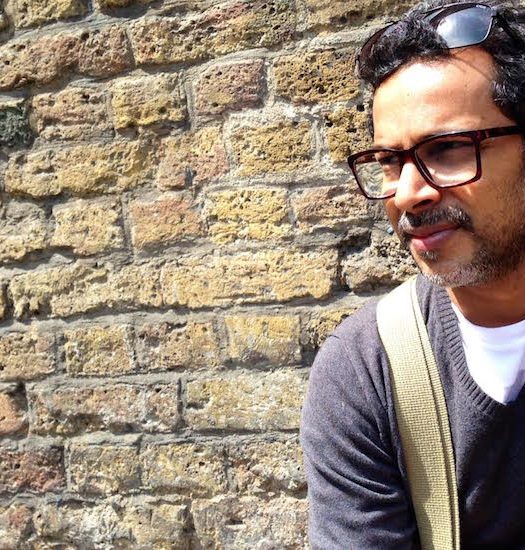Chauranga is inspired from a real incident but my idea was not to reconstruct reality – Bikas Mishra
What happens when a 14-year-old Dalit boy writes a love letter to a 16-year-old upper class girl who also happens to be the village strongman’s daughter? Through this young boy, filmmaker Bikas Ranjan Mishra highlights the violence of class oppression that still exists in rural India in his widely applauded film, Chauranga.
Bikas speaks to Pandolin about the genesis of Chauranga and all that went into making the film.

What inspired you to become a filmmaker? Why did you choose this story for your debut?
I always wanted to make films. My father used to take me to cinemas when I was really young. He is a lawyer and one of his clients ran a local cinema where he spent many of his evenings and often took me as well. Quite often the cinema ran houseful shows and I would watch films from the projector room. I often also brought discarded film reels home and tried to project them on the wall in the night.
When I started writing my film, the process involved introspection. I questioned myself and started thinking about what makes me what I am. This took me back to where I come from – my village. Chauranga is in many ways about my childhood and me.
Chauranga is said to be inspired by your village. Tell us about it. Any references drawn from reality?
Chauranga is inspired from a real incident but my idea was not to reconstruct reality. I used a creative device – I re-situated the story in my own village and imagined it unfolding right there. So, many characters in the film are people I have seen and known in my childhood.
Since you were dealing with a sensitive issue like caste, were there any factors you paid special attention to?
For me, the issue was secondary; firstly, I was trying to tell a tale. I felt relieved when at MAMI people told me that they found the storytelling gripping. Cinema isn’t the medium of preaching or raising issues on the pretext of storytelling.
How did the film get its title Chauranga?
It’s derived from a childhood memory. As a kid I was always fascinated by those four-colored pens, which only teachers had. You could write in four different colors. The title comes from that pen, which is used in the film to write a love-letter.
It can also be looked at in a different way. The Hindu caste system is made of four varnas, the Sanskrit word for caste. Varna means caste as well as colour. So, Chauranga is four colors but also four castes.

Being a debut filmmaker were there any apprehensions before starting this project? If so, how did you overcome them?
The biggest challenge is to find the right partners, the right collaborators. I was lucky that I met Onir, at the Screenwriters’ Lab in Locarno, who later came on board as the producer along with Sanjay Suri. They made the journey easier for me.
What was the writing process for this film like? Does being the writer and director give you more space to work with the script on set?
I spent a lot of time writing and revising. It was the tenth draft that we finally shot. I went to the Screenwriters’ Lab, Script Station of Berlin Talents and received expert opinion and advice on my script. I was fortunate to have found a mentor in Marten Rabarts who then headed Amsterdam based Binger Filmlab. Marten took a lot of interest in my script and opened my eyes to the potential of storytelling.
The script was often improvised without being disloyal to it while shooting. Yes, since I was both the writer and director, I changed things to make use of locations or actors or situations. We changed the physical details without compromising on the emotional framework of the narrative.
The film was to be shot in Jharkhand but later Orissa too was considered. Where did you’ll finally shoot? How important is government assistance while shooting such independent projects?
We shot in Bengal and Odisha. We didn’t require much of government support except necessary clearances needed for a film shoot. I wish governments were more pro-active and supportive. The government has its own set of issues to deal with and cinema often is not on their priority. Besides, it’s probably difficult for state governments to imagine that a Mumbai-based producer might need their support. State governments think cinema is the medium of the rich and famous. They have little idea about the independent cinema movement.
Please describe the visual treatment of the film.
The idea was to capture decadence and remain focused on the narrative. Our DoP, Ramanuj (Dutta), worked hard to evoke the right mood.

What was the key criterion for selecting the protagonist of your film? How did you help him prepare for this role?
We relied on auditions for all casting decisions. I did extensive workshops with child actors, where apart from rehearsing we discussed village life and the theme of the film in detail. The preparation process also included learning new things for actors – rolling a hoop, climbing trees etc.
How did Onir and Sanjay Suri come on board as producers? Tell us about the expertise that they brought to this film.
I met Onir at the NFDC Screenwriters’ Lab in Locarno. He liked the story and when he read the screenplay he decided to produce the film. Onir and Sanjay provided me the environment to make the film the way I wanted to. They handled the stressful part of filmmaking – producing, financing and gave me the resources and freedom to make Chauranga, the way I had dreamt of it.
Which are the filmmakers/works that have influenced you?
Bunuel had a great impact on me when I started watching films at a film society in Jamshedpur in the late nineties. I discovered the layers of Ray’s filmmaking much later when I was formally introduced to his work as a film student. I like Adoor Gopalakrishnan a lot too.
Few key points that every first-time filmmaker should bear in mind.
That will be a long list but most important – script comes first, so give it the time that it deserves. Second, filmmaking is team work – so always find the right collaborators who believe in the script and your vision as a director.



